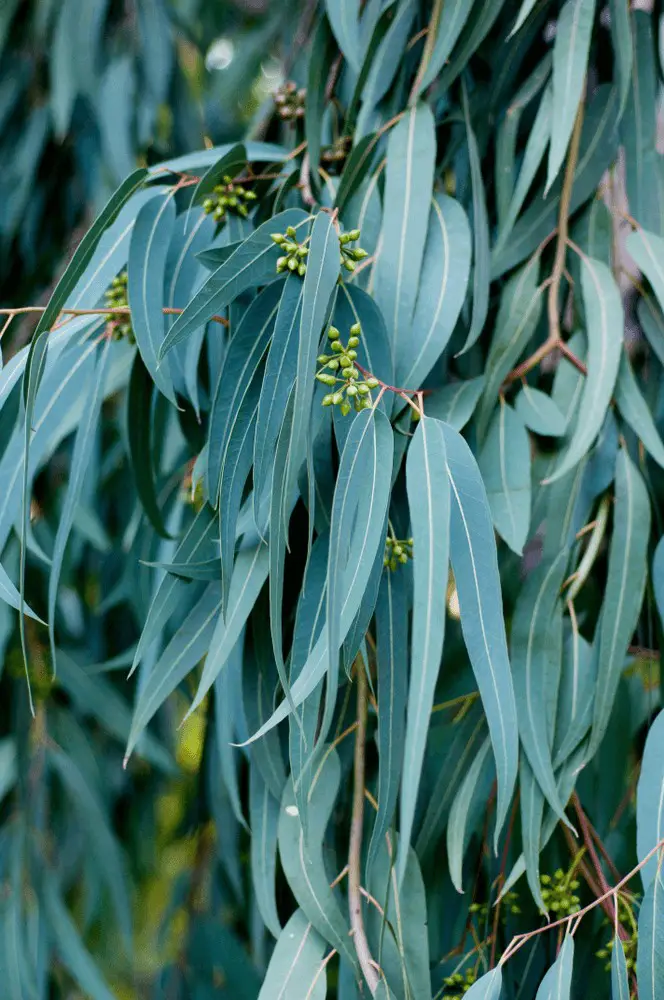12 Surprising Trees With Helicopter Seeds (Samara Fruit)
The Samara fruit, also known as helicopter seeds, is a unique type of seed that has wings and can travel long distances when it falls from the tree. In this article, we’ll delve into the world of trees that produce this fascinating fruit. One such tree is the Common hoptree (Ptelea trifoliata), which produces Samara fruit with a distinctive wing shape.
Other trees that have been known to produce these seeds include the Green Ash (Fraxinum pennsylvanica), Harlequin Norway Maple (Acer platanoides ‘Drummondii’), Japanese Maple (Acer palmatum), Norway Maple (Acer platanoides), Red Maple (Acer rubrum), Silver maple (Acer saccharinum), Tipu tree (Tipuana tipu), Tree of Heaven (Ailanthus altissima), Tulip tree (Liriodendron tulipifera), and Velvet Ash (Fraxinus velutina).
The Winged Elm (Ulmus alata) is another notable example, with its own unique winged seeds. While the Samara fruit may seem like a simple fruit to some, it plays a crucial role in the life cycle of these trees, allowing them to disperse their seeds and propagate.
What are helicopter seeds?
The unique structure of helicopter seeds, characterized by their winged design, enables them to spin as they fall from the parent tree. This remarkable adaptation allows these trees to disperse their seeds more effectively in areas with strong winds. The spinning motion of the seeds is a crucial factor in this process, as it helps them travel further away from the parent tree and increases their chances of germinating in a new location.
While this method of dispersal has its advantages, it also presents some challenges. For instance, the spinning seeds can be blown back towards the parent tree, reducing the overall effectiveness of the dispersal process. Additionally, birds often feed on these seeds before they have a chance to reach the ground, further limiting their ability to establish themselves in new environments.
Despite these limitations, the helicopter seed remains an intriguing example of evolutionary innovation, and its unique characteristics make it a fascinating topic for exploration.
Types of Trees with Helicopter Seeds (Samara Fruit).
The Samara fruit, nestled within a thin, papery membrane, contains seeds that spin like helicopter blades when the wind catches it after falling from the tree. This versatile fruit grows on trees found in diverse regions worldwide, including North and South America, Europe, Asia, and Africa. Its popularity stems from its various uses – in pies, jams, jellies, consumed raw, or incorporated into juices and smoothies.
The Samara tree itself is a stunning sight, boasting long, narrow leaves and deep brown bark. Reaching heights of up to 30 feet, the mature tree can be a majestic presence.
Common hoptree (Ptelea trifoliata).
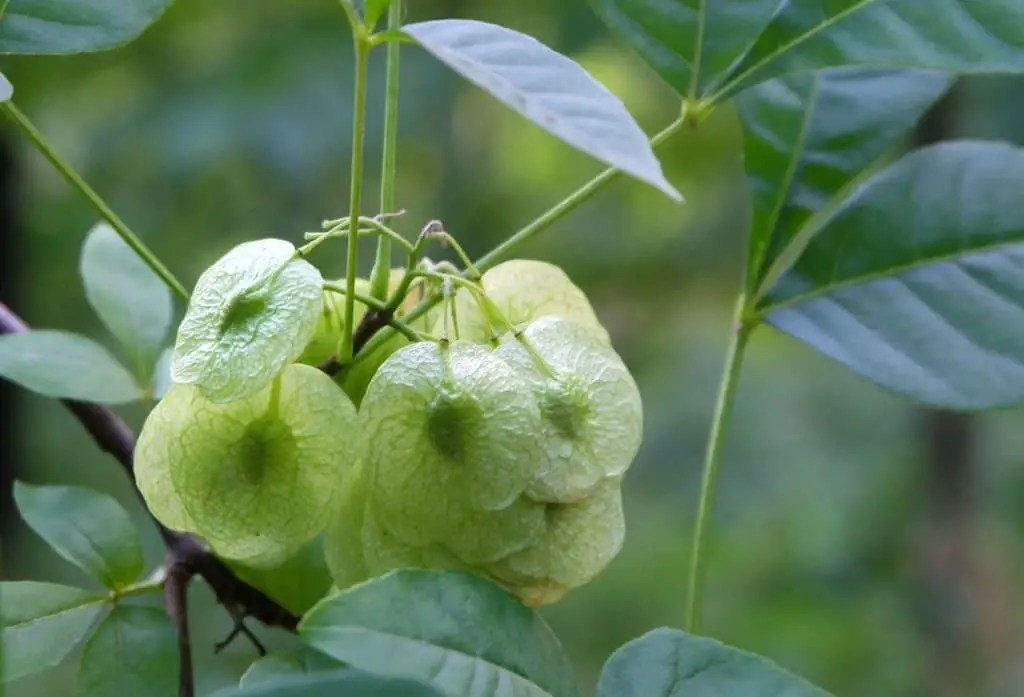
Native to North America, the common hoptree is a deciduous tree that can grow up to 15-20 meters tall, with a trunk diameter of 0.60-0.90 meters. Its trifoliate leaves are ovate to lanceolate in shape and can reach lengths of up to 12 centimeters. The small, greenish-white flowers have four petals, while the samara fruit measures up to 15 centimeters long and is winged. Blooming typically occurs in May, with fruit ripening in August.
As a popular ornamental tree, the common hoptree thrives in urban areas, tolerating drought, shade, and poor soil conditions. It also exhibits resistance to many pests and diseases. This hardiness makes it an attractive choice for landscaping. Beyond its aesthetic appeal, the common hoptree plays a vital role in supporting local wildlife. Its sheltered branches provide ideal nesting sites for birds, while the fruits are consumed by various animals like squirrels, deer, and rabbits.
The tree also serves as a host plant for several moth species, allowing their caterpillars to feed on its leaves. Throughout history, humans have utilized the common hoptree in various ways. Native Americans employed it for medicinal purposes, brewing tea from its bark and leaves to treat colds and flu. They also consumed the fruits fresh or dried them for use in a variety of dishes. Today, the tree remains popular as an ornamental species, with its fruits occasionally used in brewing beer.
Green Ash (Fraxinum pennsylvanica).
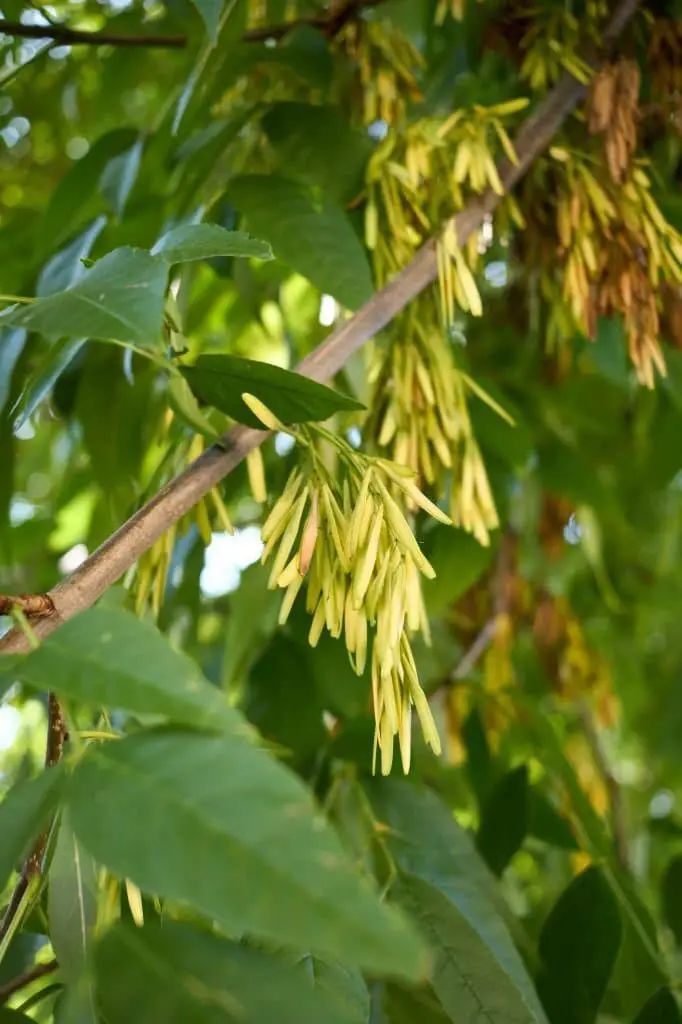
In North America, green ash is a native species that thrives in mixed woodlands alongside rivers and streams, making it one of the most widespread trees in the United States. This deciduous tree gets its name from the vibrant green hue of its leaves during the growing season, which later turn yellow or brown before falling off. One notable characteristic of green ash is its ability to shed its leaves annually, a process that’s both natural and essential for the tree’s survival.
The leaves themselves are an interesting combination of oppositely arranged pairs on either side of the stem, with each leaflet attached to a central stalk, forming a pinnately compound structure.
Harlequin Norway Maple (Acer platanoides ‘Drummondii’).
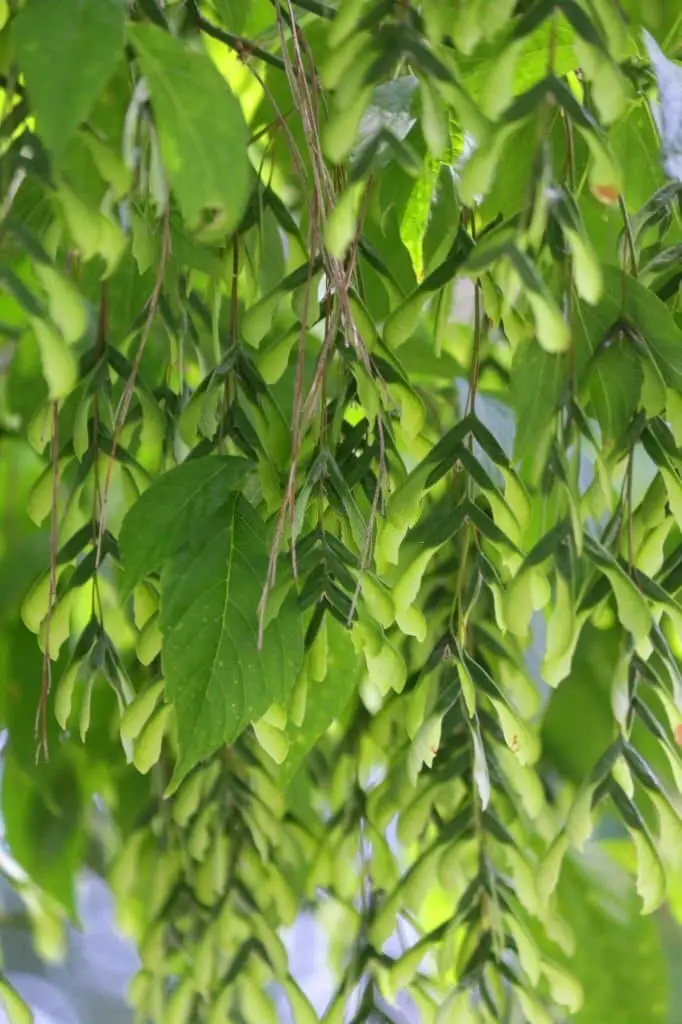
The Harlequin Norway Maple, a unique hybrid resulting from crossing the Norway Maple with the Japanese Maple, boasts stunning features. Its deep green leaves are complemented by distinctive helicopter seeds, adding an element of whimsy to any landscape. This versatile tree is perfect for families, as its interesting seeds are sure to captivate children. The Harlequin Norway Maple is also relatively low-maintenance, thriving in a range of conditions and tolerating both full sun and partial shade.
Its natural resistance to most pests and diseases further simplifies care, making it an excellent choice for those seeking a trouble-free addition to their outdoor space.
Japanese Maple (Acer palmatum).
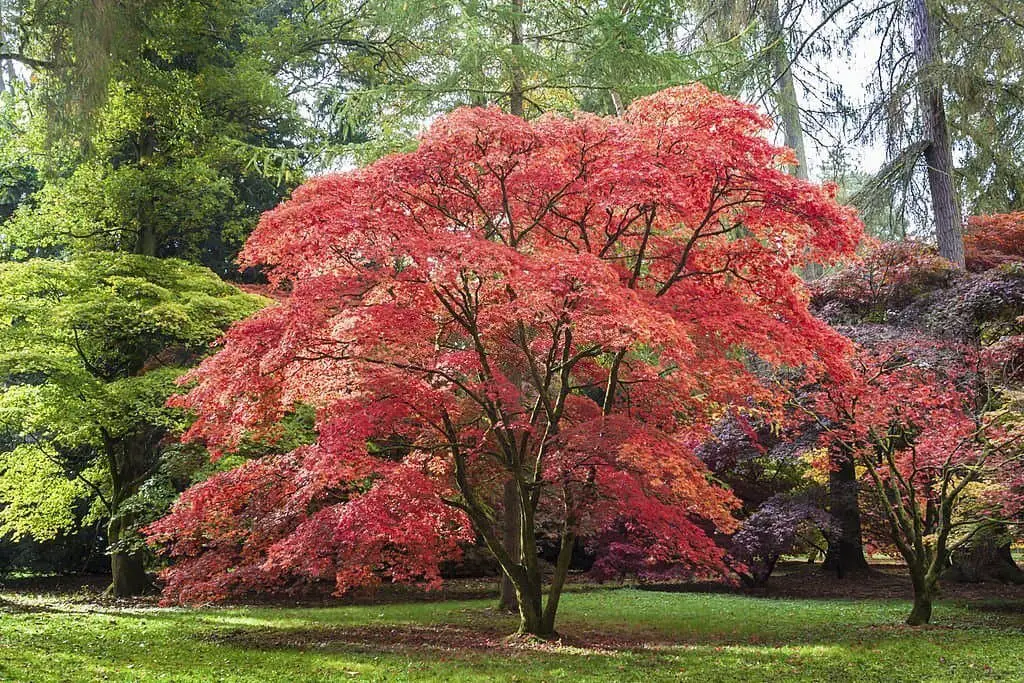
The Japanese Maple is a stunning ornamental tree that can elevate any garden to new heights. Its striking red foliage and slender branches create a visually appealing combination that’s hard to resist. Native to Japan, this beautiful tree has also naturalized in other parts of Asia, showcasing its adaptability.
As one of the most sought-after species for bonsai cultivation due to its compact size and vibrant leaves, the Japanese Maple is equally prized for its use in traditional Japanese landscaping designs.
Norway Maple (Acer platanoides).
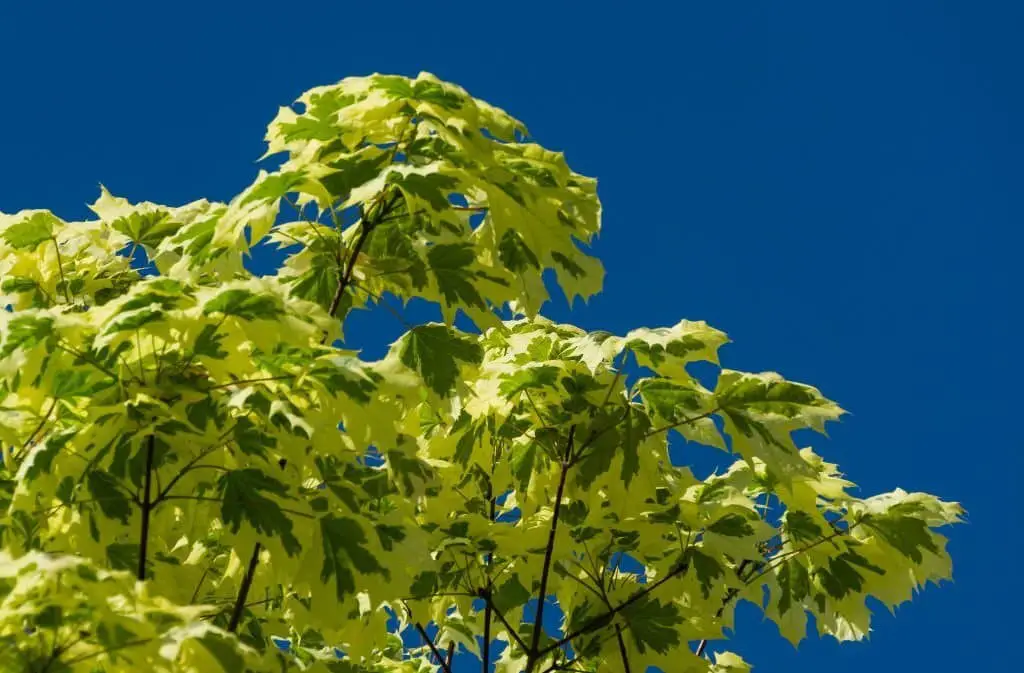
The Norway Maple tree, native to Europe, has made its way to North America since the mid-1700s. Today, it’s a common sight across much of the continent, having naturalized itself in many areas. This tree’s popularity stems from its impressive growth rate, dense foliage, and ability to thrive in urban environments. However, it’s also become an invasive force in some regions, outcompeting native species for resources.
As a deciduous tree, the Norway Maple typically reaches 30-40 meters (100-130 feet) in height, with a broad, rounded canopy. Its leaves are a notable feature, with five to seven lobes and serrated margins. The upper surface is a deep green, while the underside is paler, featuring a network of veins. In autumn, the leaves turn yellow to brown, providing a vibrant display before falling. Small flowers emerge in early spring, clustered together (corymbs) before the leaves appear.
The double-winged samara fruit ripens in late summer or early fall. When it comes to growing conditions, Norway Maple prefers full sun and moist, well-drained soils. It’s surprisingly adaptable, tolerating a wide range of soil types, including clay, sand, and loam. A slightly acidic to neutral soil pH is ideal, though it can handle alkaline soils as well. The tree is also resilient in the face of compacted soils, salt, and pollution.
However, it’s not as forgiving when it comes to drought or prolonged flooding.
Red Maple (Acer rubrum).
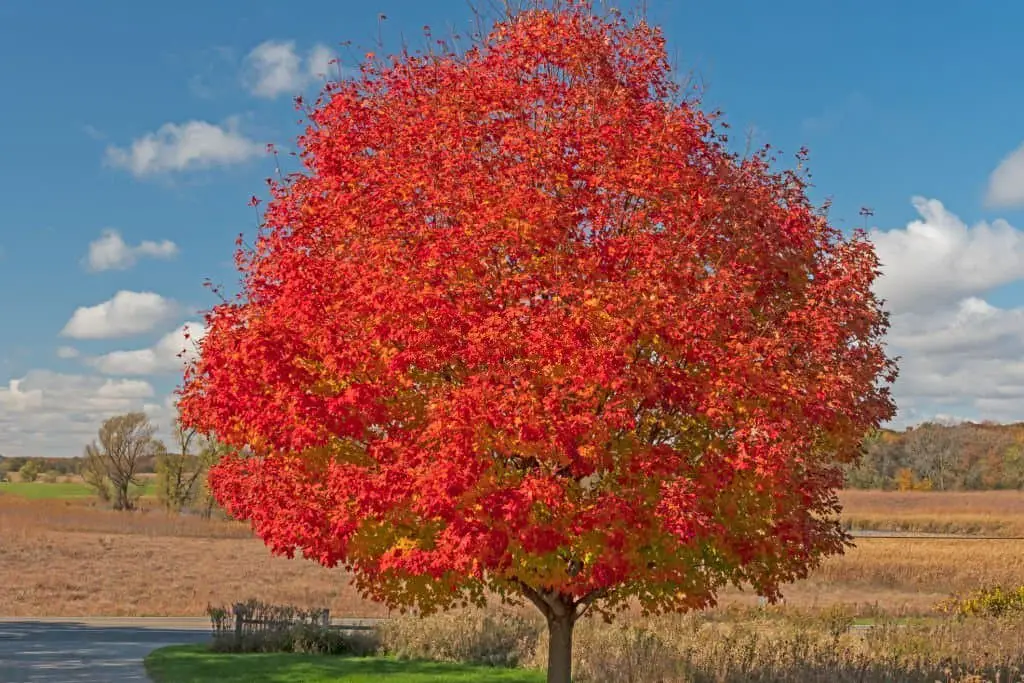
The red maple, also known as soft maple or swamp maple, is an incredibly common and widespread deciduous tree found throughout eastern North America. Its distinguishing features include reddish-brown twigs, vibrant red buds, and a fiery red hue that adorns its leaves during autumn’s peak. This relatively small tree boasts a short trunk and slender branches, making it a popular choice for ornamental landscaping as a shade or street tree.
Moreover, the red maple plays a crucial role in supporting local ecosystems by providing nectar-rich flowers that attract bees and other pollinators. Its sturdy wood is also highly valued for furniture-making, flooring, and paper production. The red maple’s geographic range spans across all states east of the Rocky Mountains, from Minnesota to Texas and Florida, as well as throughout Canada, where it thrives in provinces east of Alberta.
When it comes to its ideal growing conditions, this species excels in moist, well-drained soils but can also adapt to drier environments. While it prefers full sun, red maples are capable of flourishing in partial shade, too. Furthermore, they display a remarkable resilience in the face of urbanization and can be found growing in cities and towns. Despite its hardiness, the red maple is susceptible to various diseases, including leaf spot, verticillium wilt, and tar spot.
Additionally, it falls prey to pest damage caused by aphids, scale insects, and Japanese beetles.
Silver maple (Acer saccharinum).
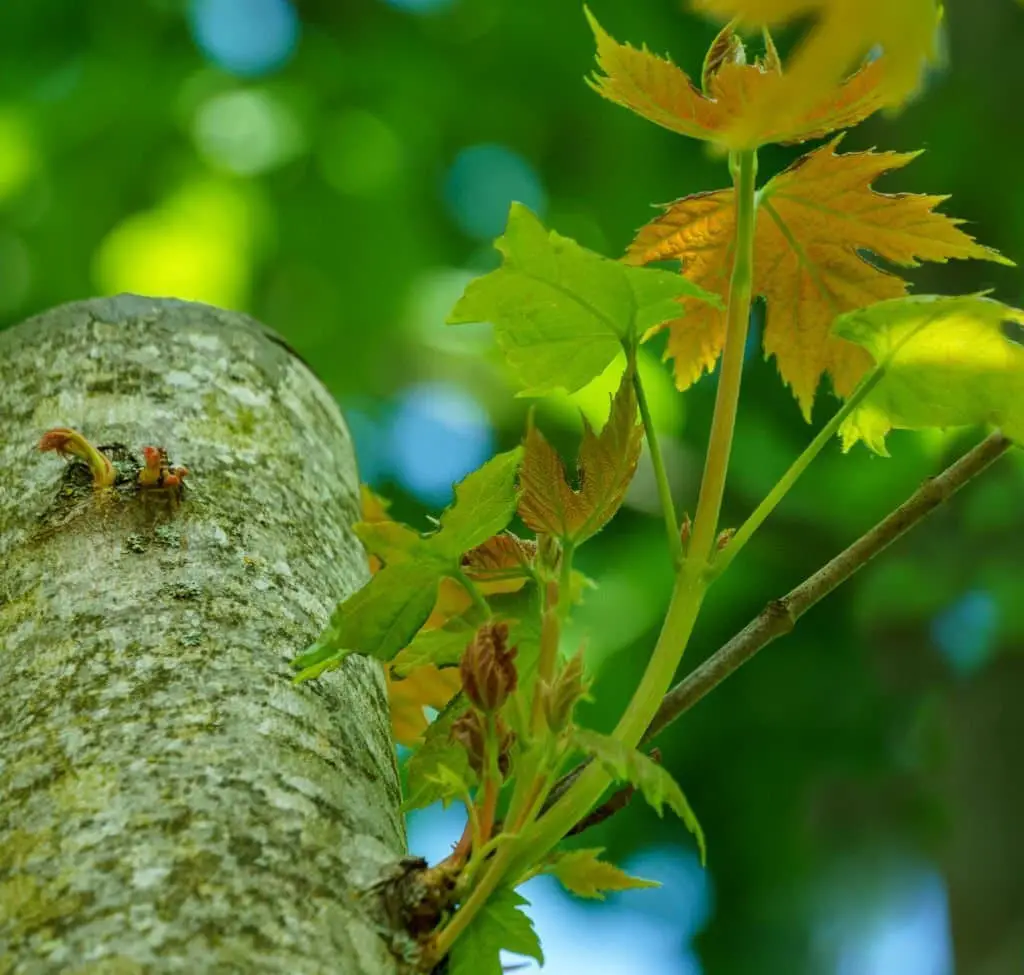
In the heart of eastern North America lies a majestic species of maple, known as the Silver Maple (Acer saccharinum). This deciduous giant can grow up to 18-35 meters tall (59-115 feet), making it one of the most abundant and widespread maples on the continent. Its impressive stature is not the only notable feature – the Silver Maple also boasts a remarkable adaptability when it comes to its growing conditions.
It thrives in moist, well-drained soils, but can equally flourish on heavier clay grounds. Furthermore, this resilient tree has a high tolerance for flooding and is often found along streams and rivers, making it a popular choice for landscaping projects.
Tipu tree (Tipuana tipu).
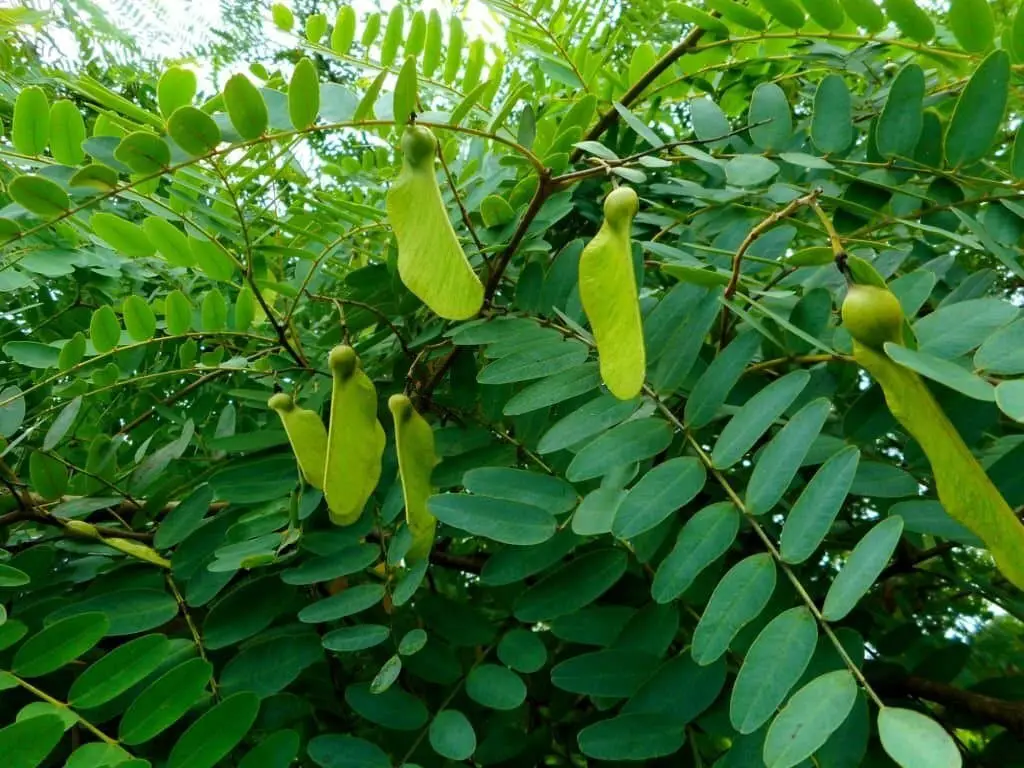
In Bolivia, Argentina, Brazil, Peru, and Uruguay, the majestic Tipu tree thrives, its vibrant orange or yellow blooms adorning the tips of branches like a burst of sunshine. The clusters of flowers give way to lengthy seed pods, each packed with numerous seeds waiting to sprout new life.
The wood of this remarkable tree is dense and resilient, making it an ideal material for crafting furniture, flooring, and even building structures that will withstand the test of time.
Reaching heights of up to 30 meters (100 feet) or more, the Tipu tree requires deep, well-drained soils and full sun to flourish. Once established, it can tolerate droughts with relative ease.
This remarkable tree plays a vital role in supporting an array of wildlife, providing shelter and sustenance for birds, monkeys, and bats. The seeds are a prized snack for rodents, while the leaves offer a succulent treat for deer.
A multitude of insects, including bees and butterflies, also call the Tipu tree home.
As an essential source of nectar, the Tipu tree supports the local pollinator population, with its flowers serving as a sweet feast for bees and other pollinators. The blooms are also a vital food source for various butterfly species.
In the tropical forests where it grows, the Tipu tree is a cornerstone of the ecosystem, providing shelter, sustenance, and habitat diversity.
Its presence helps maintain the delicate balance of these ecosystems, supporting an array of plant and animal life.
Tree of Heaven (Ailanthus altissima).
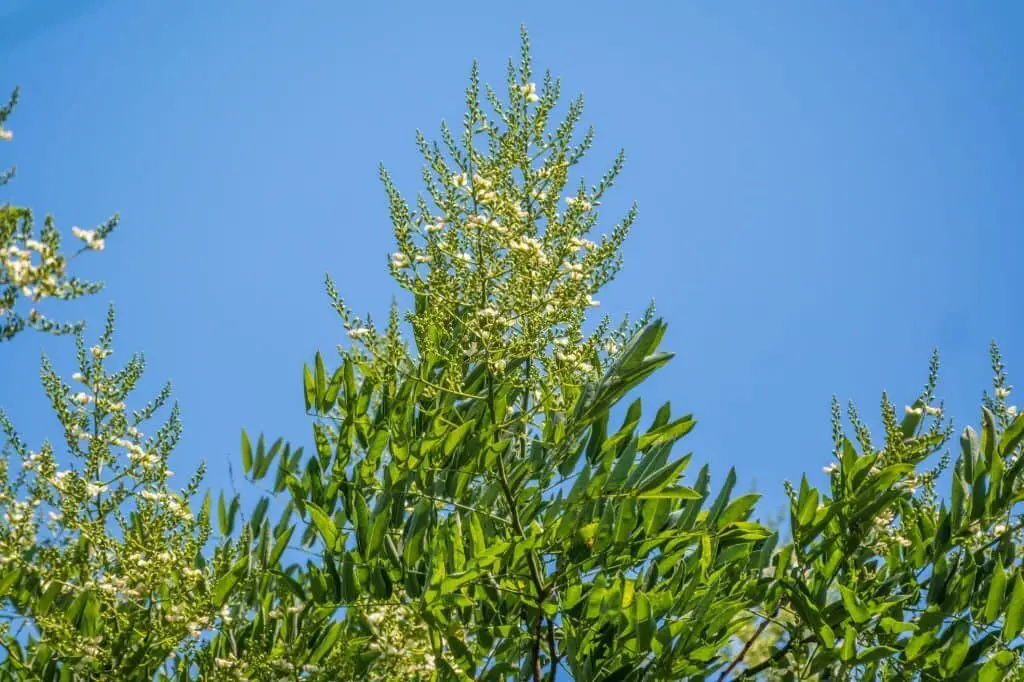
Originally introduced to the United States in 1784 for ornamental purposes, Ailanthus altissima has since become one of the most ubiquitous trees in urban landscapes across North America. This fast-growing species can rapidly reach heights of up to 50 feet (15 m) within a few years. Characterized by its large, compound leaves featuring up to 40 leaflets per leaf, Tree of Heaven produces small, greenish-white flowers that cluster at the tips of its branches.
These blossoms are followed by samaras, or winged seeds, which are dispersed by the wind. Its remarkable adaptability allows it to thrive in a wide range of environments, including disturbed areas such as vacant lots and roadsides, often being one of the first trees to colonize an area after a disturbance. Additionally, it can tolerate a broad spectrum of soils, including those that are poorly drained or compacted.
Tulip tree (Liriodendron tulipifera).
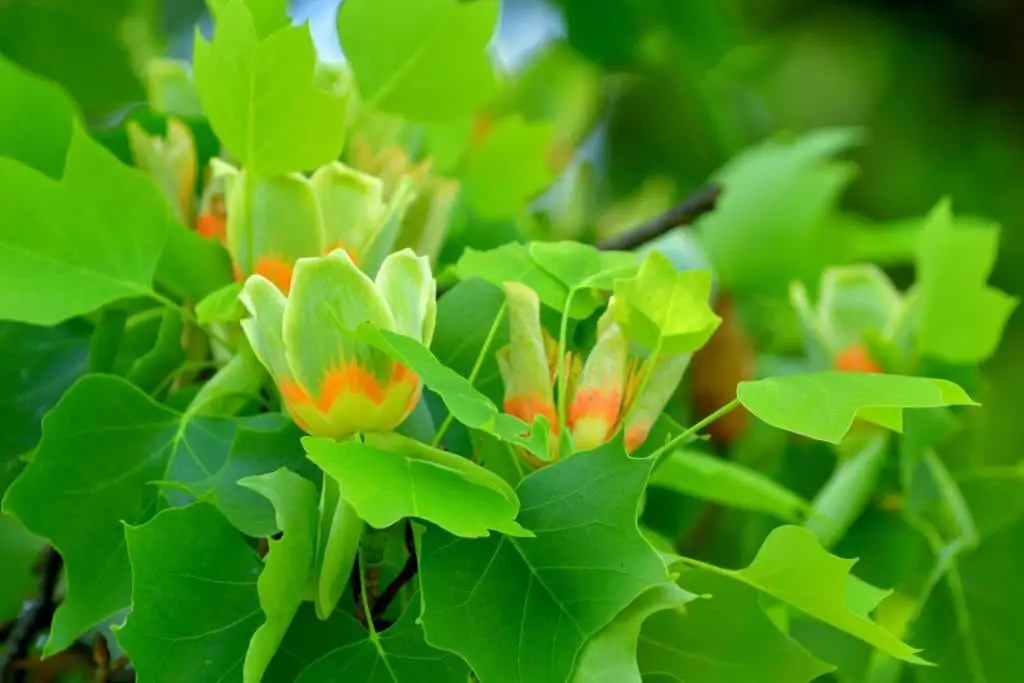
Tulip trees, native to North America, can reach staggering heights of over 100 feet, making them a striking addition to any landscape. These deciduous giants boast showy yellow-green blooms that burst forth in early spring, providing a vibrant display that’s hard to ignore. As the seasons change, tulip trees shed their large, four-lobed leaves, revealing a structural beauty that’s just as captivating.
But it’s not just their ornamental value that makes tulip trees so appealing – they’re also incredibly versatile. Whether planted in a woodland setting, alongside a stream, or in a larger garden, tulip trees thrive in moist environments throughout the eastern United States. And with their remarkable growth rate and ability to provide shade, it’s little wonder why they remain a popular choice for landscaping enthusiasts.
Velvet Ash (Fraxinus velutina).
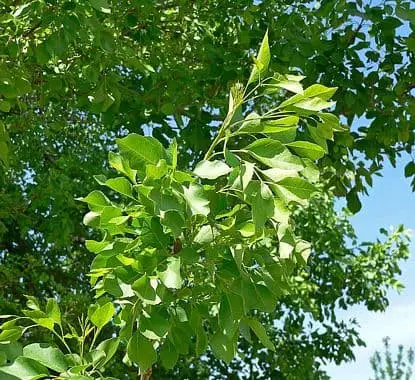
The Velvet Ash tree stands out for its remarkable growth rate, reaching heights of up to 50 feet (15 meters) within just a few years. Its compound leaves are characterized by oblong leaflets with a soft, velvety texture that gives the tree its distinctive common name. The small, clustered flowers often grow on separate male and female trees, while the winged seeds rely on wind dispersal for propagation.
Native to North America, where it thrives in woodlands and along streams from southern Canada to northern Mexico, the Velvet Ash has been successfully introduced to Europe and Asia as an ornamental tree. Its durable wood is prized for construction, furniture making, and flooring applications, while its value as a wildlife habitat is equally significant. Deer enjoy browsing on the leaves and twigs of the Velvet Ash, while birds and small mammals feed on the seeds.
The dense foliage also provides a snug haven for nesting birds, further underscoring the importance of this tree in supporting local ecosystems.
Winged Elm (Ulmus alata).
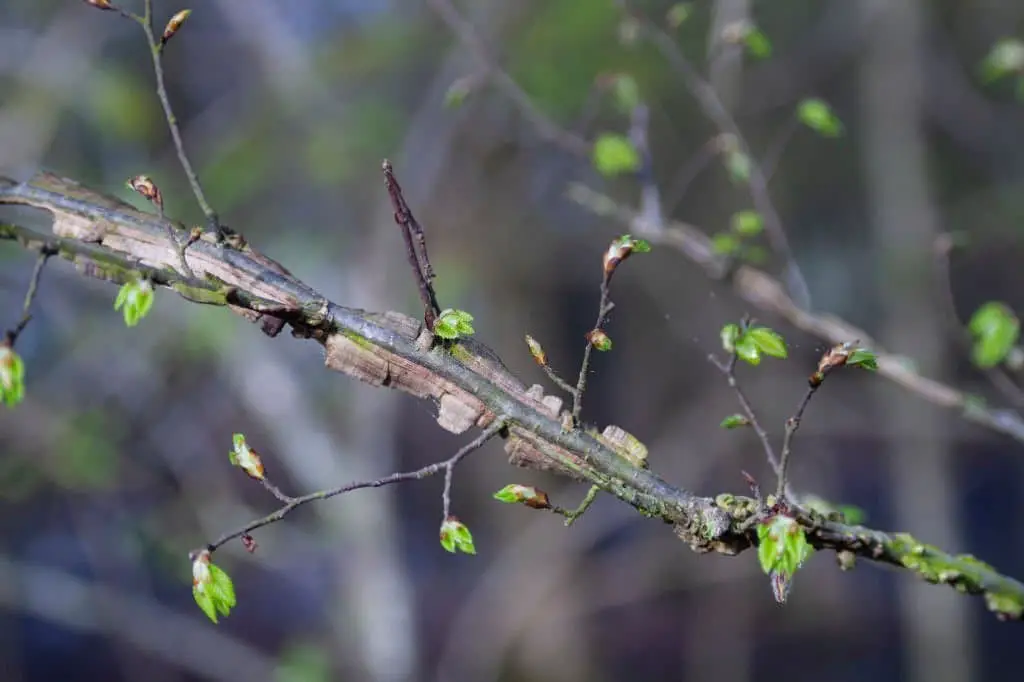
The winged elm (Ulmus alata) is a deciduous tree endemic to the southeastern United States. This species typically reaches heights between 50-70 feet (15-21 meters), with a broad canopy that can stretch up to 12 feet (366 cm) in width. Its leaves are simple, alternate, and elliptical in shape, featuring serrated margins. The tree’s inconspicuous flowers emerge in spring, while the fruit, a type of samara, ripens in late summer or early fall.
A distinctive feature of this species is its corky ‘wings’ – thickened ridges of bark that run along the length of the branches, providing natural protection against damage from ice and wind. The wood of the winged elm tree is prized for its hardness and strength, making it a valuable resource for crafting items such as furniture and flooring.
Conclusion
Nature’s creativity shines through the humble helicopter seed. This remarkable adaptation allows the seeds to harness the power of wind, enabling them to travel impressive distances from their parent tree. Although not the most practical means of seed dispersal, it is undeniably one of the most captivating examples of evolutionary ingenuity. As we conclude this article, I hope you have gained a deeper appreciation for these remarkable trees and their extraordinary seeds.
Related Posts
Discovering the rich diversity of online plant nurseries is an exciting journey. From the iconic apple trees to the majestic evergreens, each species has its unique characteristics and growth habits. But did you know that there’s more to tree care than just planting and maintaining? A career in arboriculture requires dedication, expertise, and a passion for preserving nature’s beauty. Understanding the impact of trees on property value can also be an eye-opener.
Not only do they add curb appeal, but they can also play a crucial role in improving air quality, mitigating climate change, and providing habitats for wildlife. On the other hand, removing trees from your property requires careful consideration to avoid compromising its ecosystem. For those interested in growing their own organic blueberry plants, this is an opportunity to dive into the world of horticulture and discover the rewards that come with nurturing nature.




